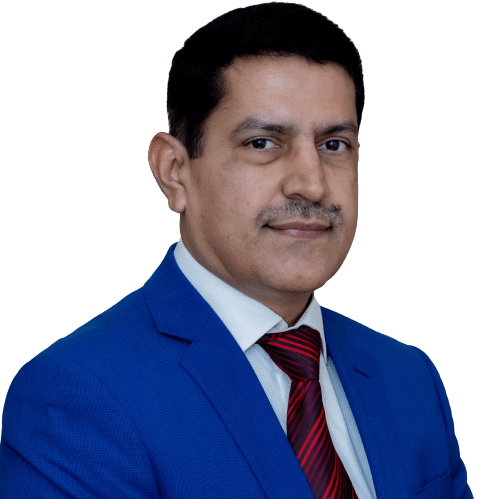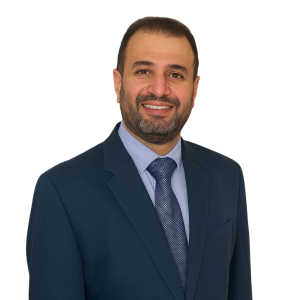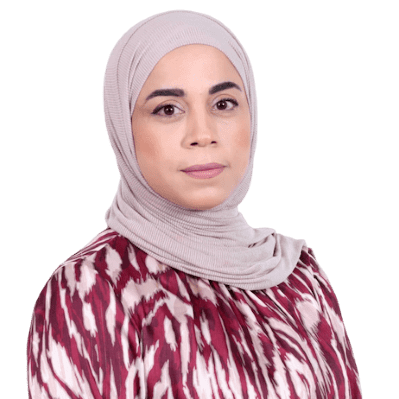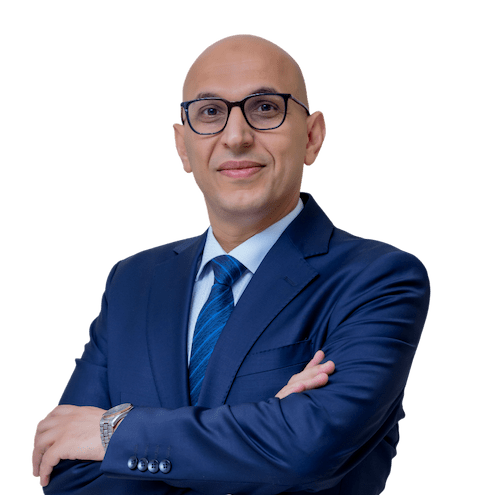Written By: Dr. Jacob Cherian K
Dr. Jacob Cherian K. is an internal medicine specialist with a Bachelors and Masters degree from Bangalore University, India. He has worked as a Specialist Internal Medicine at Mediclinic Al Sufouh in the UAE. Dr. Cherian is a member of the Emirates Medical Association, the Karnataka Medical Association and the Kerala Medical Association.
Updated On:February 14, 2024
Read more.

What is Lymphedema?
Lymphedema is a term used to describe tissue swelling resulting from an accumulation of protein-rich fluid, typically discharged through the body's lymphatic system. It typically affects the arms or legs, although it can also affect the genitalia, chest wall, belly, and neck.
Your lymphatic system is crucially dependent on your lymph nodes. Cancer treatments that harm or remove your lymph nodes might result in lymphedema. Lymphedema can be brought on by any issue that prevents the lymph fluid from draining.
The ability to move the affected limb may be compromised by severe lymphedema, which also raises the risk of sepsis and skin infections as well as causing skin alterations and disintegration. Compression stockings, massage, sequential pneumatic pumping, attentive skin care, compression bandages, and, rarely, surgery to remove swollen tissue or build new drainage pathways are all possible forms of treatment.
Causes of Lymphedema
A network of vessels called the lymphatic system circulates lymph fluid, which is rich in proteins, throughout the body. It is a component of the immune system. Filtering lymph nodes have cells that fight cancer and infection.
As you go about your daily activities, your muscles contract, pushing the lymph fluid through the lymph vessels along with tiny pumps built into the lymph vessels' walls. Lymphedema develops When the lymph veins cannot sufficiently discharge lymph fluid from an arm or leg.
The following are the most typical causes of lymphedema:
- Cancer. Lymphedema could develop if cancer cells obstruct lymphatic veins. For instance, a tumor that is developing close to a lymph node or lymph vessel may swell to the point where it obstructs the flow of lymph fluid.
- Cancer radiation therapy. Radiation can result in lymph node or lymph vessel scarring and inflammation.
- Surgery. To determine whether the cancer has spread, lymph nodes are frequently removed during cancer surgery. However, lymphedema is not necessarily the end effect of this.
- Parasites. The most frequent cause of lymphedema in tropical developing nations is an infection with worms that clog the lymph nodes.
Less frequently, hereditary diseases where the lymphatic system doesn't develop properly cause lymphedema.
Symptoms of Lymphedema
Lymphedema symptoms and signs include:
- An overall or partial arm, leg, finger, or toe swelling
- A feeling of heaviness
- Restriction of motion
- Ongoing infections
- Fibrosis or the thickening and hardening of the skin
If you have lymphedema, your symptoms can range from mild to severe. Lymphedema caused by cancer could not become apparent for months or even years following therapy.
When to see a doctor for Lymphedema?
If you detect persistent swelling in your arm or leg, schedule a visit with your doctor. Consult your physician if the size of the affected limb increases suddenly and dramatically if you already have lymphedema.
Lymphedema Risk Factors
Old age, obesity, and rheumatoid or psoriatic arthritis can increase your risk of having lymphedema.
Lymphedema Complications
Complications from lymphedema may include:
- Infections of the skin (cellulitis). The trapped fluid serves as a breeding ground for bacteria; even the slightest wound to the arm or leg might let an infection in. The affected skin is often painful to the touch, and it appears swollen and red.
- Sepsis. In the absence of treatment, sepsis, a potentially fatal condition that develops when the body's defense against an infection damages its own tissues, can be brought on by untreated cellulitis by spreading into the circulation. Medical intervention is urgently needed for sepsis.
- Permeation of the skin by leaks. When there is a lot of swelling, the lymph fluid can blister or drain via tiny skin tears.
- Skin alterations. Some persons with really acute lymphedema may experience hardened and thickened skin on the affected limb until it resembles elephant skin.
- Cancer. The most severe lymphedema instances that go untreated can lead to a rare type of soft tissue cancer.
Lymphedema Diagnosis
If you are at risk for developing lymphedema, such as if you recently underwent surgery linked to cancer of the lymph nodes, your doctor may diagnose you with lymphedema based on your signs and symptoms.
Your doctor could ask for imaging studies to look at your lymphatic system if the underlying cause of your lymphedema is unclear. Testing could include:
- MRI test. An MRI creates 3D, high-resolution images of the affected tissue using a magnetic field and radio waves.
- CT Scan. The body's structures may be seen in great detail in cross-section thanks to this X-ray technology. CT scans can show lymphatic system obstructions.
- Ultrasound. This test creates visualizations of interior structures using sound waves. It can aid in identifying vascular and lymphatic system blockages.
- Lymphoscintigraphy. The patient receives an injection of a radioactive dye, followed by a machine scan. The dye is shown traveling through the lymph vessels in the resulting images, emphasizing obstructions.
Lymphedema Treatment
Lymphedema does not have a treatment. The goal of treatment is to reduce edema and avoid complications.
Cellulitis risk is significantly increased by lymphedema. Hence, if this occurs, and, in order for you to begin taking antibiotics as soon as symptoms arise, your doctor may prescribe antibiotics.
You can learn about the methods and tools that can help lessen lymphedema swelling from specialized lymphedema therapists. Examples comprise exercising, manual lymph drainage, compression bandages, compression garments, and sequential pneumatic compression.
Surgery for lymphedema may consist of:
- Transplanting lymph nodes. The network of lymph vessels in the damaged limb is then connected with lymph nodes that have been removed from another part of the body.
- Drainage paths. This treatment establishes new connections between the lymph network and blood arteries and is another option for treating early-stage lymphedema. Following that, blood arteries are used to drain the extra lymph fluid from the limb.
- Elimination of fibrous tissue. The soft tissues of the limb become fibrous and hardened in severe lymphedema. The function of the limb can be enhanced by removing some of this hardened tissue, frequently through liposuction. Hardened tissue and skin may need to be removed using a knife in more severe situations.
Lymphedema Prevention
There is not much you can do to prevent lymphedema; however, following a certain lifestyle can be helpful. This includes maintaining proper hygiene, staying fit, taking precautions with everyday activities, wearing the right attire, and maintaining open communication with your doctor.
References
Cheville, A. L., McGarvey, C. L., Petrek, J. A., Russo, S. A., Taylor, M. E., & Thiadens, S. R. (2003, July). Lymphedema management. In Seminars in radiation oncology (Vol. 13, No. 3, pp. 290-301). WB Saunders.
Földi, E. (1998). The treatment of lymphedema. Cancer: Interdisciplinary International Journal of the American Cancer Society, 83(S12B 12B), 2833-2834.
Rockson, S. G. (2001). Lymphedema. The American journal of medicine, 110(4), 288-295.
Szuba, A., & Rockson, S. G. (1998). Lymphedema: classification, diagnosis and therapy. Vascular medicine, 3(2), 145-156.
Warren, A. G., Brorson, H., Borud, L. J., & Slavin, S. A. (2007). Lymphedema: a comprehensive review. Annals of plastic surgery, 59(4), 464-472.
Meet our doctors from the Internal Medicine department
|
||||||||
|
||||||||
|
||||||||
|
||||||||
|
||||||||
|
||||||||
|
||||||||
|
||||||||
|
||||||||
|
||||||||
|
||||||||
|
||||||||
|
||||||||
|
||||||||
|
||||||||
|
||||||||
|
||||||||
|
||||||||
|
||||||||
|
||||||||
|
||||||||
|
||||||||
|
||||||||
|
||||||||
|
||||||||
|
||||||||
|
||||||||
|
||||||||
|
||||||||
|
||||||||
|
||||||||
|
||||||||
|
||||||||
|
||||||||
|
||||||||
|
||||||||
|
||||||||
|
||||||||
|
||||||||
|
||||||||
|
||||||||
|
||||||||
|
||||||||
|
||||||||
|
||||||||
|
||||||||
|
||||||||
|
||||||||
|
||||||||
|
||||||||
|
||||||||
|
||||||||
Similar Posts
teleMEDCARE App
Download teleMEDCARE app from Google Play or App Store to connect immediately to Medcare doctors at a click of a button and without an appointment.

Home Services
We offer our patients a broad range of home health care services in the comfort of their own homes. Book an appointment for lab tests, vaccinations, nurses and physiotherapists.

Chronic Care
Know more about our Chronic Care Management Programme in partnership with Damana Saicohealth.

teleMEDCARE App mobile
Download teleMEDCARE app from Google Play or App Store to connect immediately to Medcare doctors at a click of a button and without an appointment.

Home Services
We offer our patients a broad range of home health care services in the comfort of their own homes. Book an appointment for lab tests, vaccinations, nurses and physiotherapists.

Spotii
We have partnered with Spotii to offer a more flexible way to pay - Pay over time for your purchase. No interest, no cost & no catch.


























































